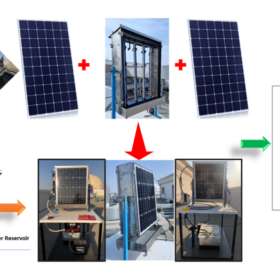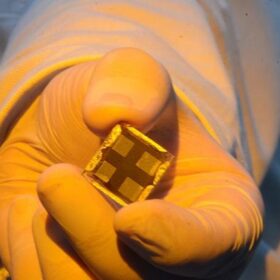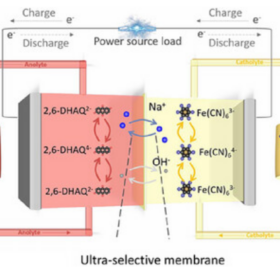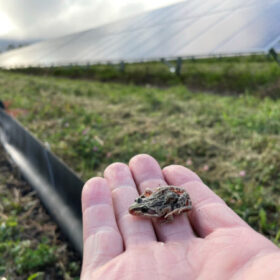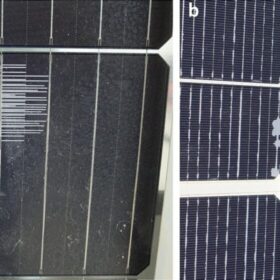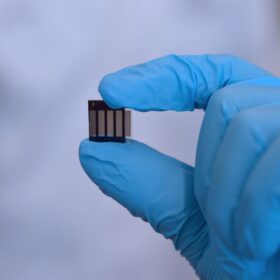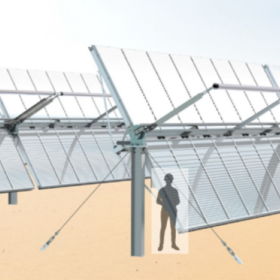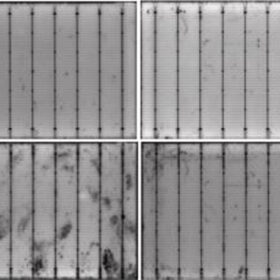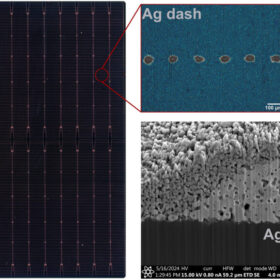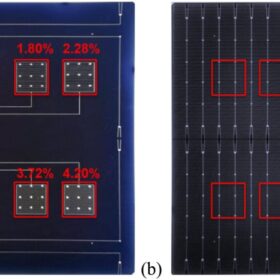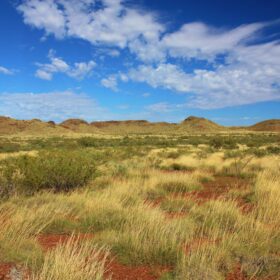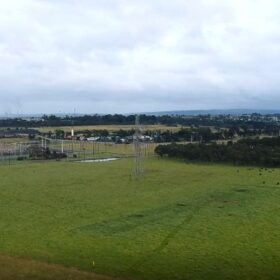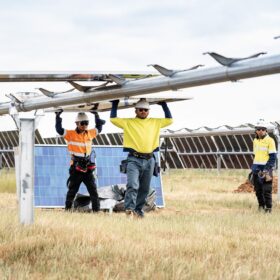Mist system boosts efficiency of bifacial PV modules
Scientists have placed mist nozzles inside a bifacial PV module and measured it under an extremely hot climate. The module was found to generate up to 37% more electricity on sunny days and up to 46% more on cloudy days compared to standard monofacial panels.
Improving perovskite solar cell durability via formamidinium cations
A team of São Paulo-based researchers have found incorporating formamidinium cations into methylammonium-based lead iodide perovskite films increases the durability of perovskite solar cells when fabricated and measured under ambient conditions.
Researchers develop stable, high-current density water-based flow battery
Engineers at Monash University have a developed a next-generation water-based battery suitable for application in residential use and compatible with rooftop solar in real time.
New biodiversity toolkit helps solar farm developers fast-track projects
New South Wales-based biodiversity offset provider Thesium has launched a new product designed to help solar farm developers de-risk and accelerate their projects, which includes a credit feasibility analysis and board-ready stakeholder documentation.
Three-year field test shows TOPCon, HJT solar module reliability in desert areas
A three-year field experiment comparing the performance and reliability of passivated emitter and rear cell, tunnel oxide passivated contact, and silicon heterojunction solar modules in desert climates found that HJT modules exhibited the highest degradation, while TOPCon modules showed the lowest degradation.
Halocell partners with UQ to advance world-record solar tech
New South Wales-based perovskite cell producer Halocell Energy is partnering with University of Queensland researchers to accelerate the commercial production of lead-free solar panels based on record-breaking tin-halide PV cell technology.
Concentrated solar plant turns to plastic mirrors to power clean heat
South Australia researchers will team with industry partners to build a concentrated solar thermal plant in New South Wales featuring lightweight plastic mirrors that incorporate an aluminium-silica reflective coating to produce industrial heat or electricity.
Researchers warn of ‘hidden contaminants’ that could increase TOPCon, HJT solar module humidity-induced degradation
Australian researchers have identified five contaminants that could increase damp heat-induced degradation in TOPCon and heterojunction cells and modules. Their analysis has shown these contaminants could originate from improper handling during cell or module processing.
Silver-lean screen-printing can reduce silver use in TOPCon solar cells by 40%
Researchers from the University of New South Wales have teamed with international colleagues to develop a metallisation technique for TOPCon solar cells that can reportedly reduce silver usage in the devices’ rear side by 85%.
Jolywood’s laser-assisted firing process increases TOPCon solar cell efficiency by 0.6%, says UNSW research
New research from the University of New South Wales have found that the Special Injected Metallisation (JSIM) technique developed by Chinese manufacturer Jolywood can considerably increase TOPCon solar cell efficiency. The scientists described precisely how laser-assisted firing enhances cell performance, reportedly filling critical gaps in industrial TOPCon cell optimisation.
